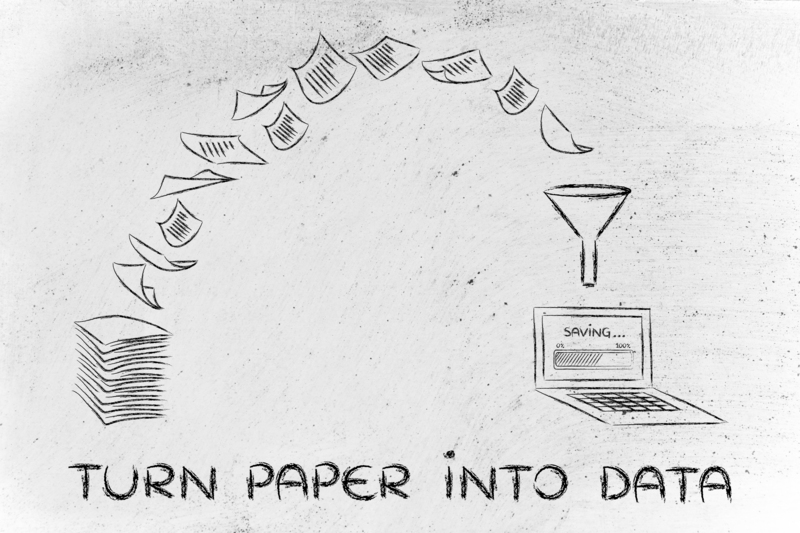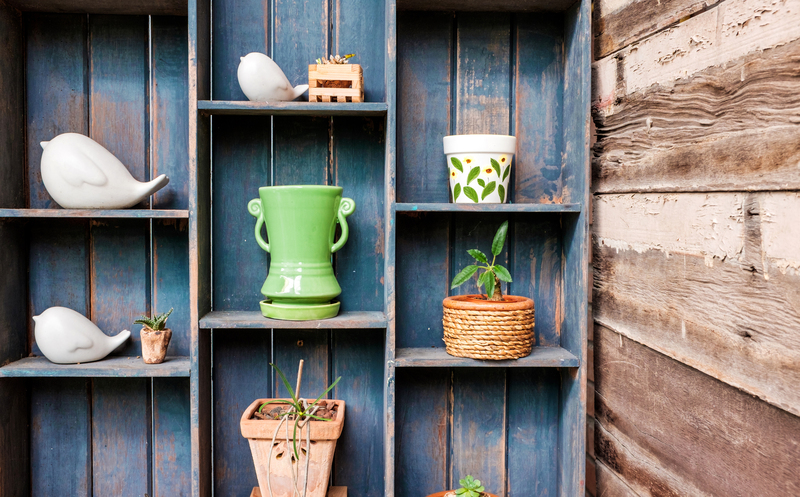Greener Living: Top Plastics to Shun for a Better Planet
As environmental issues become increasingly urgent, the drive for greener living is stronger than ever. Our everyday choices, especially what we consume and discard, have ripple effects on the planet's health. One of the most significant culprits behind environmental degradation? Plastics.
Today, we're diving deep into which plastics to avoid, why they matter, and how opting out of these items can lead to a sustainable lifestyle. If you're embarking on a plastic-free journey or looking for ways to promote eco-friendly habits, this article is for you.
Understanding the Plastic Problem
It's no exaggeration to say plastic pollution is one of the most pressing ecological issues of our time. Each year, over 8 million metric tons of plastic end up in our oceans. The majority comes from everyday items--many designed for single-use--that persist in our ecosystems for hundreds of years.
Environmental Impact of Plastics
- Non-biodegradable: Most plastics don't decompose naturally, clogging landfills, oceans, and waterways.
- Wildlife Threat: Animals ingest or get entangled in plastic debris, causing injury or death.
- Human Health Concerns: Microplastics--and toxins leached from plastics--find their way into our food and water, posing risks to human health.
But while "plastic" is a catch-all term, not all plastics are equal. Some cause more environmental damage than others. The path to greener living begins with knowing the plastics you should avoid most.

The Worst Plastics: Which to Shun First
Let's review the top plastics to shun for a healthier planet. Prioritizing their elimination from your life is one of the simplest, most effective eco-conscious choices you can make.
1. Single-Use Plastic Bags (HDPE and LDPE)
- Main Uses: Grocery, produce, and retail bags.
- Why Avoid? These bags are lightweight, easily escape waste management systems, and litter the environment. They break down into hazardous microplastics and endanger wildlife. Recycling rates remain dismally low.
- Green Tip: Carry reusable bags made from fabric, jute, or other sustainable materials.
2. Plastic Straws (PP and PET)
- Main Uses: Beverage straws, cocktail stirrers.
- Why Avoid? Disposable straws are used for mere minutes but persist for centuries. They're often not recyclable and are among the top items found in beach cleanups.
- Green Tip: Opt for stainless steel, glass, silicone, or paper straws instead.
3. Polystyrene (Styrofoam) Food Containers and Cups
- Main Uses: Takeout containers, foam cups, trays, and packaging peanuts.
- Why Avoid? Polystyrene is nearly impossible to recycle and easily fragments into microplastics. It leaches chemicals, especially when heated, and is classified by the EPA as a possible human carcinogen.
- Green Tip: Request cardboard, compostable, or reusable containers for food takeaway.
4. Plastic Water Bottles (PET)
- Main Uses: Bottled water, soft drinks.
- Why Avoid? Although technically recyclable, most single-use water bottles end up in landfills or our environment. PET can leach antimony and phthalates--substances potentially harmful to health, especially when bottles are reused or exposed to heat.
- Green Tip: Invest in a high-quality reusable water bottle made from stainless steel or glass.
5. Plastic Cutlery (PP, PS)
- Main Uses: Disposable forks, knives, spoons at fast food outlets and parties.
- Why Avoid? Cheap, hard to recycle, and often contaminated with food, which makes them landfill-bound. They accumulate in oceans and pose severe threats to marine animals.
- Green Tip: Carry your own reusable cutlery kit wherever you go.
6. Microbeads in Personal Care Products
- Main Uses: Exfoliants in face washes, toothpaste, body scrubs.
- Why Avoid? Microbeads bypass water treatment systems and accumulate in rivers and oceans, infiltrating food chains and harming marine life.
- Green Tip: Choose natural exfoliants like oatmeal, salt, or sugar for your skincare routine.
7. PVC (Polyvinyl Chloride)
- Main Uses: Packaging films, shrink wraps, some bottles, children's toys.
- Why Avoid? PVC contains toxins such as phthalates and heavy metals. It releases dioxins during production and disposal, which are linked to cancer and reproductive issues.
- Green Tip: Seek products labeled "PVC-free" and choose alternatives like glass or uncoated paper.
8. Disposable Coffee Cups with Plastic Linings
- Main Uses: To-go coffee or tea cups.
- Why Avoid? Most have an inner plastic lining that renders them non-recyclable in mainstream facilities. They contribute billions of wasted cups globally each year.
- Green Tip: Bring your reusable coffee mug or flask to your favorite cafe.
Decoding Plastic Numbers: What Should You Watch For?
Ever noticed those numbers inside a triangle on the bottom of plastic containers? These resin identification codes provide clues about recyclability and safety. Knowing which numbers signal "steer clear" is invaluable for greener living.
- #3 PVC -- Avoid at all costs due to toxins and recycling difficulties.
- #6 PS (Polystyrene) -- Not recyclable in most systems, highly polluting.
- #7 "Other" -- Mixed plastics, includes BPA--avoid unless clearly marked as bioplastics.
#1 (PET) and #2 (HDPE) are more widely recycled but should still be minimized in a low-plastic lifestyle due to persistent waste issues.
Why Some Plastics Are Worse Than Others
Not all plastics have the same impact. The worst offenders tend to be single-use, hard to recycle, laden with harmful chemicals, or highly prone to creating microplastics.
- Single-use items increase overall consumption and waste.
- Composite and multi-layer plastics (like some food pouches) are almost never recycled.
- Plastics with chemical additives (softeners, flame retardants, colorants) often pose added risks to human health and the environment.
Your Path to Plastic-Free: Practical Steps to Greener Living
Long-term plastic reduction is about progress, not perfection. Here are smart strategies to phase out the most harmful plastics:
- Carry reusable essentials: Tote bags, coffee cups, water bottles, cutlery sets, and straws.
- Choose unpackaged goods: Shop at farmers' markets or bulk bins--bring your own containers and bags.
- Avoid impulse buys: Many "convenient" products come with excessive plastic packaging. Plan ahead!
- Be label-savvy: Learn plastic resin codes and steer clear of products that spell long-term trouble for the planet.
- Support plastic bans and legislation: Use your voice and vote to encourage larger systemic changes.
- DIY where possible: Make your own cleaning, beauty, and food-storage solutions. Beeswax wraps and cloth bowl covers replace cling film.
Bonus: Eco-Friendly Swaps to Inspire Your Journey
- Bar soap in cardboard instead of liquid soap in pump bottles
- Compostable trash bags rather than conventional plastic
- Refillable products (cleaners, detergents, cosmetics) over single-use packaged items
- Secondhand shopping (for toys, storage, furniture) to dodge new plastic production
Remember: Every swap counts! The shift to greener living is a collective effort, fueled by millions of small but decisive everyday actions.
The Role of Recycling--And Its Limits
Recycling is important, but it's not a cure-all for the plastic crisis. Globally, only about 9% of all plastic produced has been recycled. Many plastics degrade in the recycling process or have little economic value, leading to stockpiles in exporting countries or incineration.
- Focus on reducing and refusing as primary strategies, with recycling as a last resort.
- Clean and sort recyclables meticulously to increase the odds of actual recycling.

How Businesses and Governments Are Responding
The undeniable impact of plastic waste has prompted some governments and corporations to take action:
- Many cities and nations now levy plastic bag bans or taxes.
- Corporate sustainability plans are shifting toward biodegradable or compostable packaging.
- NGOs are strongly advocating for the elimination of single-use plastics globally.
However, effective action depends on responsible consumer demand driving plastic-free products and holding brands accountable for their environmental footprint.
Conclusion: Shaping a Greener, Plastic-Free Future
Greener living isn't about going to extremes--it's about making informed, mindful choices every day. By learning which plastics to avoid--like single-use bags, polystyrene foam, and PVC--and seeking practical, earth-friendly alternatives, you become part of a global movement for change.
Your choices matter. Every time you refuse a plastic straw, bring a reusable bag, or select a product free of harmful packaging, you're helping to build a cleaner, safer, and more beautiful planet. Together, we have the power to shun harmful plastics--and create a brighter future through sustainable, eco-friendly living.
Start Today: Your Greener Living Checklist
- Identify and ditch the plastics above--one at a time
- Share knowledge with friends and family to spark change
- Engage with local cleanups and community initiatives
- Support businesses that prioritize plastic-free solutions
For more tips and inspiration on sustainable living, subscribe to our newsletter and join the push for a plastic-wise, greener world!